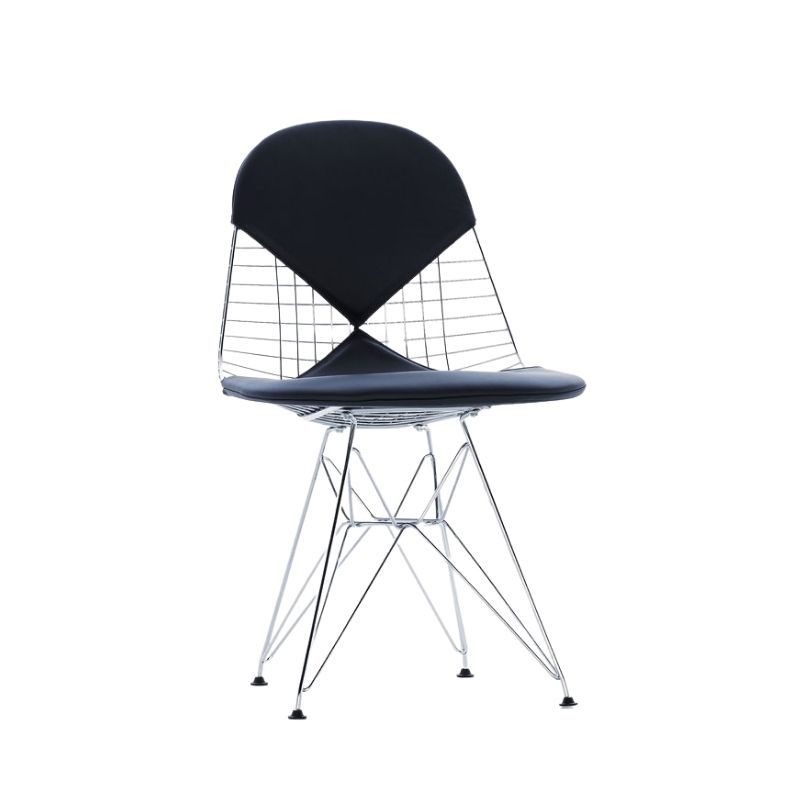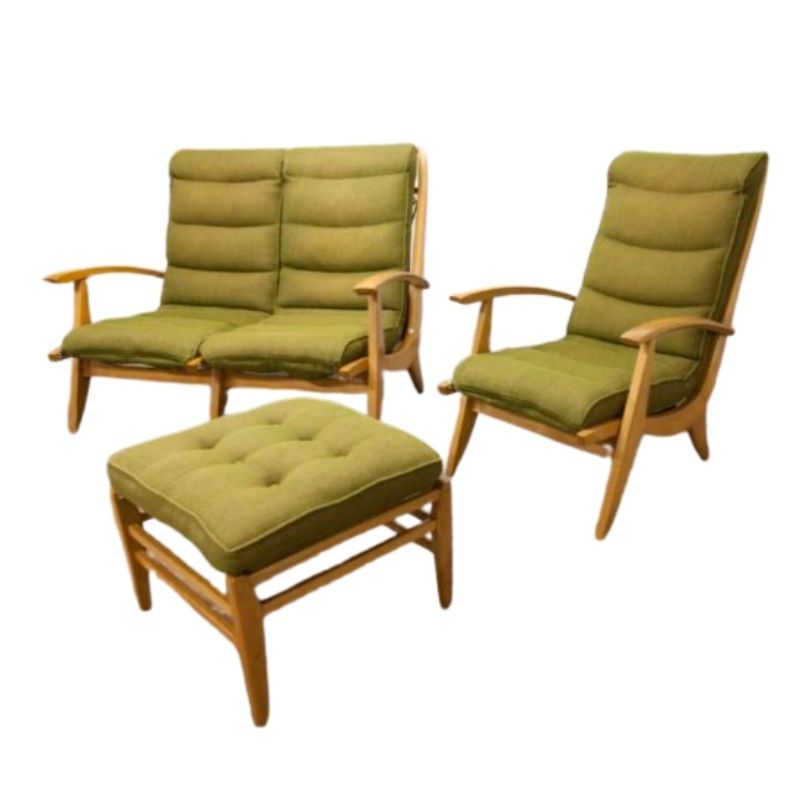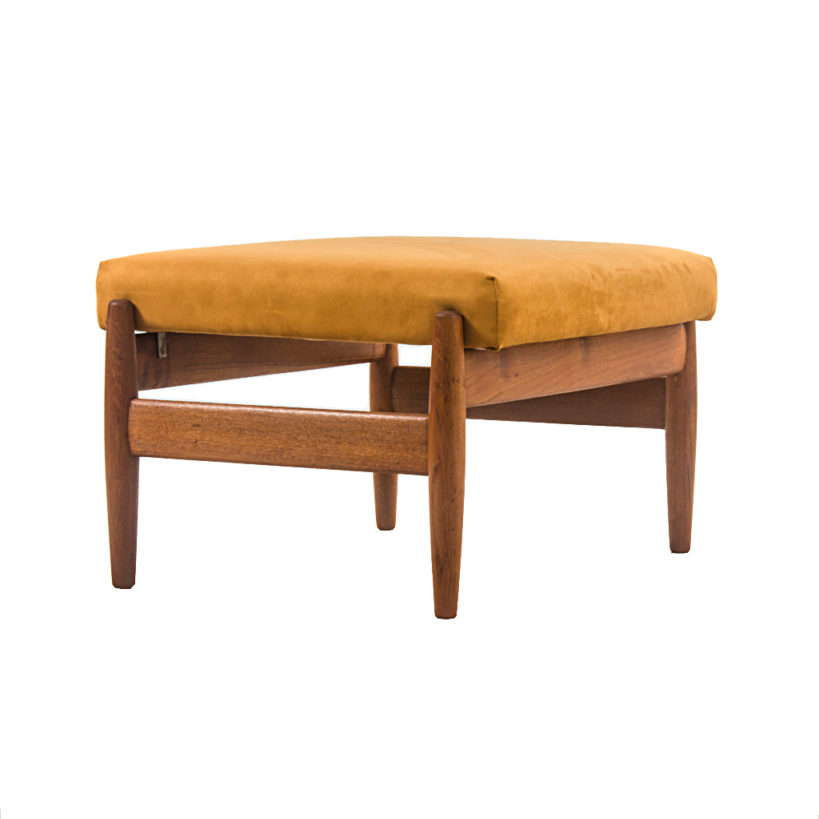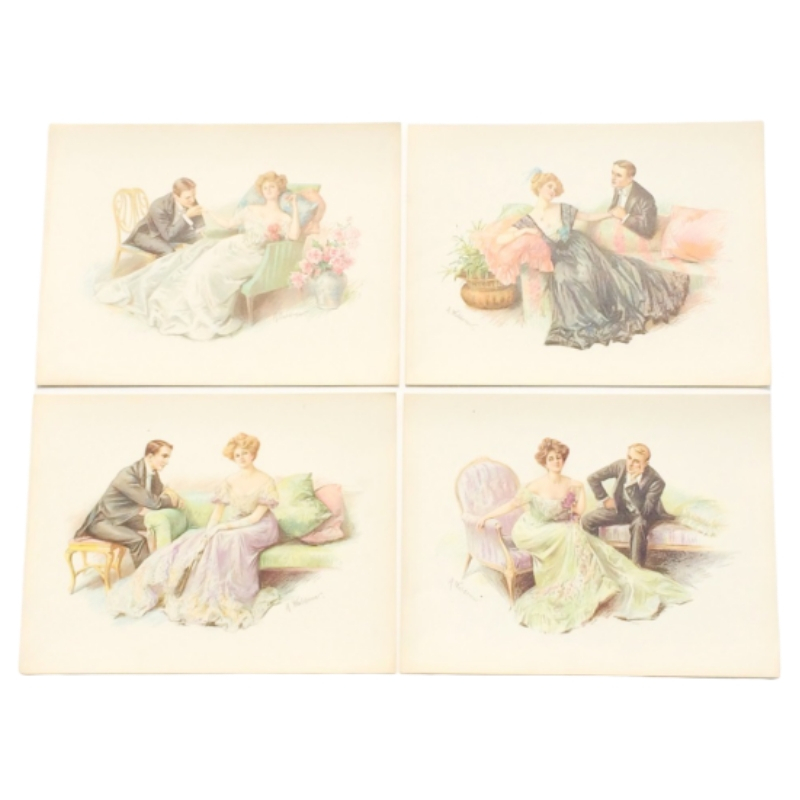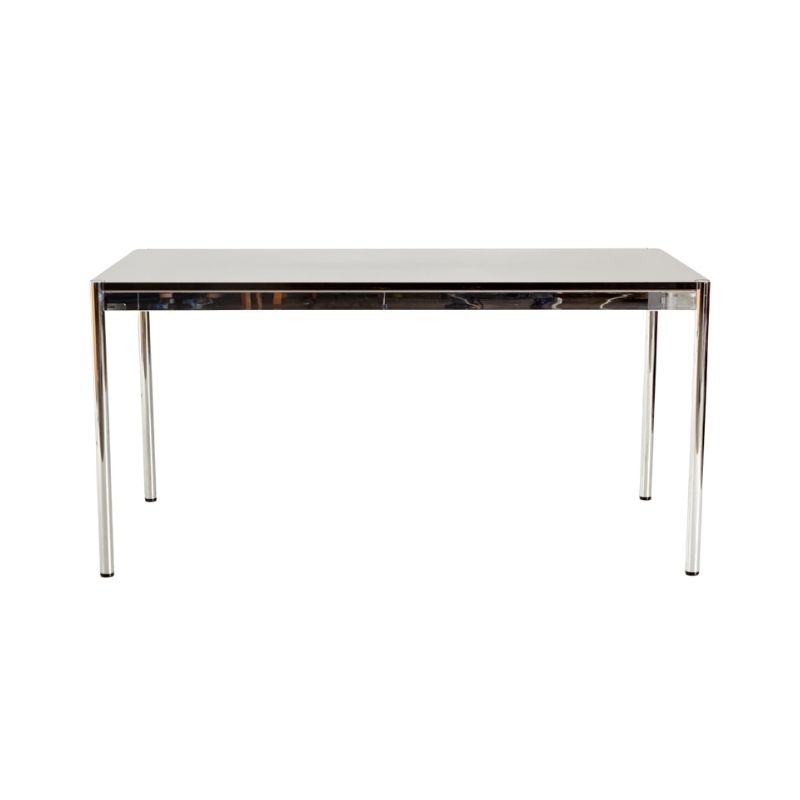Ever since I did some research in grad school about what people liked and disliked about certain real estate projects after they were built, I have been intrigued by, what shall I call it? Forensic market research; i.e., research into why consumers rejected something. What one can learn from product failure seems especially useful to me. And a well thought out product creates enough clarity of fit between product and context that the reasons for rejection may be more reliably understood--after some digging. Unfortunately, in my field success had many parents, but failure was an orphan. Product failures are rarely studied and those involved tend to distance themselves as much as possible from the product failure.
I wondered if it were any different in home product design?
Looking at your Tip'N Mix bowls, they seem like one of your usual rigorous and systematic designs, yet they were not commericially successful according to the DA comments beside their picture. Two questions:
1) In hindsight, do you have an opinion about why people did not embrace these bowls? Was it a sound concept that needed different execution? Or was the concept invalid. Or was the product marketed poorly? Or were the concept and execution sound and the marketing adequate, but the consumer just to routinized to accept innovation?
2.) Do producers or designers do forensic market research into why certain furniture and houseware products that are soundly thought out fail?
In science, researchers and engineers learn about as much from failures as from successes. In the professions, the study of failure seems taboo in comparison. I even feel a little uncomfortable asking you about this issue. Tis a pity. I do believe we've much to learn from this sort of thing.
Koen's 'Tip'N Mix' bowl
I gladly participate...
in the exercise. We have known for some time now that humans learn more from their mistakes than from their successes, sorry..I have to re-formulate this. Unless you are president or something like that you learn more...
Give me some time to answer your questions in detail it will make it more intersting
Here we go!
The short story of the Tip 'n Mix, as I remember it goes as follows.
By the time the so called Margrethe bowls (designed by Bjorn & Bernadotte)
were honored with an award to mark the 25th year of continuous presence on the international market, and the Queen of Denmark had received a solid silver version of the bowl to commemorate the fact that she had allowed Rosti to use her name, the bowls had been so successful that they were copied all over south east Asia. As a former Mepal/Rosti designer and as vice president of the company that distributed the bowls in Canada it was a major concern to me. So I contacted my former employer and basically asked a simple question:' How is it that 25 years after the first mixing bowl design, we have not learned enough about the use and the manufacturing technology to design a better one?' They agreed and said, 'Well, you know better than anybody else how to produce melamine products and you are an experienced designer so why don't you send us proposals?
Any good design is the result of better insight in the function, the technology or the culture in which the product is used, or a combination of these factors. My only weakness in these three fields was the function so'.The research was quite simple. I asked a number of people to prepare a number of recipies involving a mixing bowl. Left them alone in front of a video camera and in doing so I collected a series of video tapes with people using mixing bowls. Regardless the recipe they all had a choice of seven different sizes 'Margrethe' bowls.
The short version of my conclusions from having viewed the videos a number of times was 1- We can reduce the number of bowls to three sizes. 2- The largest size of the existing bowls is too small. 3- Nobody holds the bowls horizontal on the non-slip ring. 4- The existing bowls poor poorly. 5- The only use for the highest bowl/jug is with a stick-mixer (a typical European product) but does not work very well.
The main technological considerations that could lead to improvements were the differences in wall thickness of the existing bowls and the absence of a rim. This last one is important because pressed melamine has to be finished. The parting line between core (the steel that forms the inside) and cavity (the steel that forms the outside) is a rather large irregular rim that has to be sanded and re-polished. The absence of a rim makes that surface irregular before and after the polishing. The large differences in wall thickness are the result of the way the rubber ring is held.
'Margrethe' Bowl by Bjorn and Bernadotte
cont.
Originally the bowls had no rubber ring! Unfortunately this has been forgotten in the process but the Bjorn/Bernadotte design (sometimes claimed by Jensen because he worked at the Copenhagen office at the time) did not have a rubber ring. The rubber ring was a suggestion from the test kitchen from Dr. Oetker, a well known German company and the first importers of the Danish bowls.
I can not remember who at Dr. Oetker came up with the idea but Stig Jorgensen, one of the co-founders of Rosti and Sonny Klingert the sales manager at the time came back from a visit to their German client with the suggestion and Rolf Farenholtz agreed and the changes were made to the moulds. To integrate the double ring that holds the rubber ring into the rest of the shape required a rather heavy section but nobody at the time thought that this would do much more than increasing the weight of the bowls. What it really does is that it creates tension in the bowl because some material (where the sections are thin) is over-stratified and the thicker sections are under-stratified. (Stratification is to thermo-setting plastics what polymerization is to thermo-plastics).
The end result is a product that is kept too long in the mould and that is slightly more brittle than necessary. This lack of understanding was quite common at that time and in fact, for some years to come. When Kristian Vedel, one of Denmarks most talented, but sometimes forgotten designers, did the wonderful series of melamine dishes and bowls for Orskov he did the same thing. The top rim is only a few mm. (3/16") thick, whereas the same wall close to the bottom is 12 mm thick (almost ½"). There is more than one reason why it was generally believed that it did not affect the strength of the product, but that is a subject I will have to save for the 'book on the Magrethe bowls'
The combination between observing the users keeping the bowls under different angles but never flat on the counter, and the technological interest in uniform wall thickness became the basis of the new concept: a bowl without any base rim, round in the bottom, sitting in a loose anti-slip ring that would hold the bowl in any desired position and keep the bowl steady on the counter.
To illustrate the principle I did send Rosti a small aluminum cup, one of these found objects, part of a reflector for a lighting fixture, and a piece of a small cardboard tube and I glued on the edge of the aluminum reflector a small integrated handle.
cont.
Upon reception of the 'sketch' they agreed in principle and I was asked to send technical drawings of three new sizes of bowls, a large one (5L.) (Larger than the largest existing one) a medium and a small and the small one should have high enough sides to accommodate the use of a stick-mixer. I added a small rim at the top but hardly changed the general shape of the bowl because the general shape of the existing 'Margrethe' bowls had proven to be good.
Part of that choice was inspired by the knowledge that Rosti has recently invested in automatic rim trimming and polishing equipment and that these machines were adapted to the existing bowls.
The first proposal was rejected on the basis that it was not different enough from the existing bowls. Rosti's general comment was: make it the way your small prototype looks' and as far as the trimming is concerned you will have to do better than what we have now because the trimming equipment has the tendency to grind too much on one side of the spout and handle and not enough on the other side.
Both spout and handle are complex issues. In order to poor well, the rim around the bowl can not continue into the spout. That thickness would make the spout drip. In order to have a good spout one has of course to respect the parabolic geometry of the surface of the liquid, but the edge of the spout has to be as thin as possible without making it brittle. The parabolic surface can be substantially improved by raising the edge of the spout higher than the edge of the bowl. That is the hidden reason behind so many traditional shapes of jugs and other vessels with a spout, where the edge of the spout is always higher than the rest of the edge. In order to finish the spout on the existing equipment I had to do the opposite: lower the edge. It made the geometry of the spout very critical. SLA or other rapid prototyping equipment did not exist at the time and any prototype was very expensive. $8,000 to $10,000 for a bowl did not allow me to test a whole lot of different possibilities, so instead I relied on theoretical knowledge, physics of fluids etc. It was one of my great satisfactions that the bowls, including the large one with a liquid mass of 5 liters (11 U.S.Qts) pours very well no matter the quantity or the speed. The handle was basically the opposite problem and because of that it ended up mirroring the angle and the shape of the spout. The rest of the design was a matter of good detailing.
cont.
When the product was chosen as best of category in the annual Industrial Design magazine selection, one of the jury members commented on the quality of that fine detailing, especially on 'invisible' parts like the underside of the handle.
I also made sure that the three sizes would form a set. Size and volume are of course dictated by the function but in spite of that I made sure that the nested bowls (one inside the other) would form one horizontal line without the rings and a regular progression with the rings.
This time Rosti was happy!...and, in hind sight maybe too happy.
Although my effort had been toward creating an less expensive alternative to the existing Bjorn/Bernadotte bowls and in spite of the fact that they were indeed less expensive to make and required less raw materials and less stratification time, Rosti's marketing people were convinced that it would be better to marked it as a 'design' product, at a substantial higher price as the older bowls. To do so a lot of effort was put into nicely designed colored boxed, combination sets with spoon and scraper etc.
Shortly after the introduction this approached seemed to be the right one. In the Frankfurt house wares show it was chosen ?Product of the year?, the ID magazine awards came only shortly after and several museums asked for the products to be includes in their design collection. In reality (the market) things were not that bright. When it became clear that boxing highly stackable products was a waist of transportation costs and when the stores started to ask for 'open stock' Rosti developed a rather smart styrene foam frame that in combination with a cardboard strip to hold the ring made a good and compact packaging and both versions stayed on the market.
After a few years the production was stopped and the balance of the stock in the U.S. was sold to a large retailer in New York that had been quite successful with the products. In the 9/11 destruction of the world trade center, the debris of the falling towers entered the store and the whole thing was destroyed.
cont.
In the meantime the basic idea had attracted some attention and WMF the German manufacturer of fine stainless steel products asked Rosti if they could buy the rings to use with their stainless steel bowls. Rosti obliged and for some time the royalties on the rings alone exceeded the royalties on the complete bowls. Another German company realized that one of the weak points in the design was the separate ring. They came on the market with a bowl that had a dovetail shaped edge under the bowl that slides into a lose ring. The ring was held onto the bowl but the bowl could still change position. It was smart but it could only be done in a thermoplastic material and not in melamine. A year or so later Ikea came on the market with a cheaper version of the WMF system: a stainless steel bowl and a softer thermoplastic ring.
Up to this day I receive comments of people that have the Tip'n Mix bowls saying how pleased they are and expressing regrets about the fact that they are not produced anymore?
So 'what went wrong'
- On the functional side the loose ring might be a problem. The bowls are one of the few products that I designed that I am using myself and I never found it difficult, but it could be perceived as difficult. The way we use them most is actually without the riA small base was necessary to hold the bowl in place on the automatic trimming machine, and that small base is largely sufficient for a number of uses. But there is no question about the fact that it is a merchandizing problem.
- I have always wondered if it is the thickness and weight of the bowls that makes people suspicious of the quality. The bowls are substantially lighter than the older 'Margrethe' bowls. There are two reasons for that choice. One was a question of cost, but we never compromised cost against durability. The more important is that the surface hardness that makes melamine so suitable for a mixing bowl (think whisks, forks, spoons etc.) makes it also brittle' unless it is thin enough to gain in flexibility. This is not unlike say glass fiber. The thin fibers are less breakable than a thicker glass sheet simply because they are flexible. The thickness of the Tip'n Mix is a similar choice although not that extreme. The combination of less internal tension and a somewhat thinner wall thickness makes them very durable but 'does the consumer perceives it that way?'
cont.
- Part of the story is also that early on Rosti's marketing people decided to make the bowls only in two popular colors: white and red. For the less informed under us, color is mostly, or should I say: was mostly used as a way of getting shelf space. The house wares trade knows that 70% of sales are in white and all the other colors together is of course the balance. The reason why there are much more colors to choose from is that it gives the product more shelf space or real estate as it is called in the trade. If you have six colors you force the retailer to have them all or if he is smart and makes a choice of three or four, the sales person pulls one of the oldest tricks in the book by saying: 'Oh, good choice! By the way would you mind if I sell the other colors to store so and so' (who happens to be a competitor of course)'? A variation on the same theme is to answer: ' Good choice, or should I say a very original and personal choice?' Most of the time the retailer knows that the right answer in both cases is to take a few of everything. So to reduce the colors to a choice of two certainly affects the space you get in the store and thus the attention you get from the consumer.
- The choice of the three sizes instead of seven has never been questioned and we have not seen any retailer or consumer commenting that choice. I think that it is very unlikely that that would be a factor.
- There are two 'external' factors that might have played a role. The first one is the change in the retail environment. Large discount stores with no other personnel than rack-fillers and 'welcome to Wall-mart, have a nice day' associates have taken away any possibility to inform the public about the quality of a particular product. Advertising is simply too expensive and by default the only thing that is left is to promote the brand, not the features of the products, unless they are general and become part of the branding. In general it means that pricing is important but the products have become more and more conservative. The timing for a 'new' approach or a change in archetype was not very good.
A second external factor ware a number of rapid changes in the management, staff and ownership functions at Rosti. Sometimes a product is victim of circumstances or is too much part of a particular legacy to survive such changes. In particular the collapse of Rosti U.S. Inc. might have played a role.
cont.
- Some people in design management circles have argued that you can not change goals or positioning of a product half way the development. Others with the same background have convinced me of the opposite. That product development is a process and that it is very possible and indeed likely that you stumble over some interesting ideas in that process. These ideas fall either on the wayside and start a live of their own (see: Apple as an off-spring of Xerox) or you change strategy by adapting to the new ideas. Flexible strategies seem to work better?
There might still be two other reasons. When the prices dropped because of south-east Asian prices they did not drop to the level where they eventually stopped. In the first round it still seemed possible to compete with Danish production standards and within Danish social and environmental legislation. But in the same period independent retailers were reduced from 80% of the retail market to 20% and sometimes less. The Tip'n Mix bowls are enough out-side of the archetype to be a difficult product for the mass-merchants. It is in fact a typical specialty store product that requires a minimum of information to sell well.
Last but not least the kitchen, once one of the important parts of the home and a place where people paid attention to the products they were buying, lost that status. In general the kitchen is not that an important place anymore (se dramatic increase of ready-made meals, take-out etc.) I know people that are proud of the fact that they do not own a dinner table anymore? (It's too high in front of the T.V.) So there might be a misunderstanding of my part of the cultural contexts of the product, but I would not mind at all some out-side advice, in fact the reason why I gave a rather elaborate description of the context is to allow the outside observer to have a real critical look?
I will think on this...
and get back to you in a week. For now I will try to distill your brilliant richness of detail to a few of essenses:
1) You designed a better mouse trap with out a fitting retail outlet.
This I suspect was the blow that killed the victim. Why? Because it eventually killed Rosti too. Your product got caught in a paradigmn shift from high service retail outlets to low service retail outlets. It lost its foot traffic and needed high service to sell it. It needed Rosti healthy to push it. The market place has found a place today for products like your bowls. Its called Brookstone. You product was not a gimick, but it could effectively be sold as one to start with and then it could move out into mainstream stores if it caught on.
2.) You designed a better mouse trap when people were trapping fewer mice and were satisfied with their existing mouse traps.
This was a blow that wounded the victim seriously from the beginning, but probably did not kill it. Some innovative products can overcome adverse market trends and stimulate demand. Still, this would have kept me from green lighting the project. Why? Because I like to have rising demand on my side.
3.) you designed a better mouse trap without a name telling people which mouse trap it was better than.
This is a nearly fatal blow in my book. Incremental improvements, even large incremental improvements, should be made to the legacy product to free ride on that legacy, not to an alternative product. Ideally, your bowls should have been called "The New and Improved Rosti Margrethe Bowls" or the "Rosti NeoMargrethe Bowls," or "the Rosti Margrethe Moderne", or well you get the idea. A Rosti Tip'n Mix Bowl is disconnected from what it improves--a Margarethe. In fact it's name doesn't claim to improve anything; this is a mistake since it is designed chiefly to improve on the Margarethe. Tip is also a bad word for a bowl. Tip connotes tipping over and making a mess, not tipping to advantage. And Tip'n Mix sounds like a low quality gimick, not a brilliant, well made innovation, especially when I already trust my "solid, strong" Margrethe Mixing Bowl. Its not a bowl. Its a Margrethe. If you have to refer to the function, call it "The Rosti Tilt-a-Bowl." Also, if you can't call it a Margrethe, or whatever these kinds of bowls were called, then follow another rule: don't tell what a thing does. Tell what's good about what a thing does. "The Rosti Easy Mix Bowl." The "Rosti ErgoBowl" or "The Rosti Strong-Lite Bowl." Or my favorite: "The Rosti Super Bowl: Lighter, Easier, Smarter." And if those didn't test well, then I'd go to a feminine name because a bowl is a feminine form--it is a container.
all for now.
Answer from the young designers thread
Koen asked me about my reaction to the question of the original poster in that thread, and I thought I'd answer quickly.
I don't really have a reaction to the question, but I have some thoughts that struck me when I read the thread earlier, and off the top of my head from my view point of trying to sell design products what immediately comes to mind is 1) a sort of cultural inhibition against the material, and 2) thoughts about the pricing.
Let's start with number 2. Not too far away from me lies IKEA, the biggest IKEA store in Sweden presumably. When you wander the aisles you'll see lots of products that make you start. Isn't that a Kartio glass? Isn't that an Essence glass? Isn't that a Dahlström pan? Aren't those Mango-cutlery?
Then you look closer you see that the price is a faint glimmer of what you have to pay for the real thing. IKEA "copies" a lot of designs and sells it under its own brand. I enclose the word in quotes because the products are always different enough to avoid the accusation of plagiarism, but still...
It would be fine if IKEA was like Wal-Mart or K-Mart. But here in Sweden IKEA is known as a design company first and foremost. They design furniture and home products, and them mass produce it cheaply in low-wage countries, and sell it as design products all over the world.
Again, when you walk down the aisles of IKEA in Sweden you will see little polymer based products - and what you will see will hardly cost anything. This indicates the status of polymer based products at least in this country.
If you leave IKEA and go to a dedicated design shop, you will be hard pressed to find any polymer products. You will find glass, clay, wood - but hardly any plastic or melamine. Plastic just doesn't have any status as a material, in this country. It is a throwaway material, a compromise for not having nice glass, clay, metal or wooden items.
So, a very expensive polymer product just would not sell in Sweden because people do not attach any worth to such objects. It is ingrained that "plastic", meaning any polymers really, is a cheap mass market thing that shouldn't cost a lot, and which can have no intrinsic worth of its own apart from solving a functional issue.
koen, my wife and i spent an...
koen, my wife and i spent an inappropriate amount of time on the ski lifts this week mulling over the forensic mystery of Tip'n Mix bowls. This of course is our problem and not yours. 🙂
Anyway, she came to one conclusion and I came to an alternative design solution based on her conclusion.
First, her conclusion: too many parts. She said she views bowls as among the most simple, basic tools of cooking and she likes them simple and basic. She liked and understood the "tipped" idea immediately, but said she just would never buy a bowl with two parts. When pressed why, she looked at me as if I were crazy and said, "Because a bowl is a bowl." What I inferred is that she would not buy a two-part knife or fork either. Now, understand that this is a woman physician with multiple degrees in the hard sciences, speaks three languages, loves all the paraphernalia of dressage, wears submersible digital music players that project sound through the cranium while swimming, rides a fine racing bike, and uses all kinds of technology in her work. She said a two part bowl meant more cleaning. More stuff hogging space in a cabinet. More things. And all when what she wants is bowl! (the exclamation was hers). To distill it: multiple parts (though only two) struck her as unneccessary complication and so an inelegant solution to the tipping that goes on during hand mixing.
Now for my alternate design solution: design a one-piece, ergonomically correct bowl that fits more comfortably into the crook of the arm and the chest than a conventional bowl does. This uses design to help the customer do what he/she already does, only more comfortably and effectively. Call it "The Ergo Bowl: designed to make mixing easier."
Just a thought that does not totally clear up the forensic mystery.
If you need any help, please contact us at – info@designaddict.com



